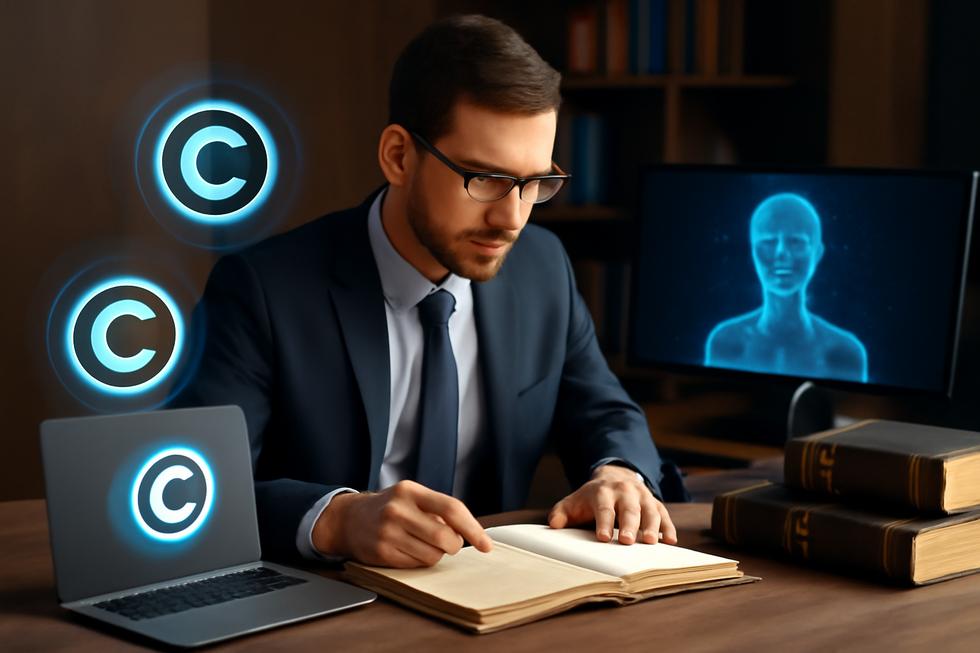Introduction
Copyright legislation law forms the backbone of protecting original creative works, granting exclusive rights essential for business success. For business owners, understanding how copyrightability is defined legally establishes the foundation necessary to safeguard intellectual property. The rise of artificial intelligence has introduced new complexities, challenging traditional copyright frameworks and creating a landscape marked by litigation and novel fair use debates. Transparency measures, such as the TRAIN Act, reflect a growing emphasis on data disclosure and accountability in AI training practices, directly affecting businesses utilizing or interacting with AI technologies. Further, emerging regulations like the NO FAKES Act address the nuanced rights surrounding digital replicas, enriching the dialogue on intellectual property and publicity rights in today’s digital age. This article explores these critical facets of copyright legislation law, offering business owners a comprehensive view of how evolving legal standards balance creators’ rights, user freedoms, and technological innovation.
Tables of Contents
Chapter 1: Foundations of Copyright Legislation Law: Copyrightability and Legal Standards
- Defining Originality and Copyrightability: The Legal Bedrock of Protecting Creative Works
- Navigating Legal Standards and the Fair Use Doctrine in Copyright Protection
Chapter 2: Navigating Complex Litigation and Fair Use in AI-Driven Copyright Challenges
- Technological and Legal Complexities Shaping AI’s Role in Copyright Litigation and Fair Use Debates
- Balancing Innovation and Rights: Policy, Economic, and Societal Forces Shaping AI’s Role in Copyright Law
Chapter 3: Transparency and Regulation in Copyright Legislation Law: The TRAIN Act and AI Data Disclosure
- Enhancing Accountability in AI Training: Legal Frameworks and Transparency Mandates Under the TRAIN Act
- Navigating Transparency and Enforcement: A Comparative View of the TRAIN Act and the EU AI Act
Chapter 4: Navigating Legal Complexities of Digital Replicas in Copyright Legislation Law
- Balancing Enforcement and Rights Protection: The NO FAKES Act’s Legal Framework and Challenges
- Balancing Innovation, Expression, and Property: The Multifaceted Impacts of the NO FAKES Act on Digital Replica Rights
Chapter 5: Ongoing Evolution in Copyright Legislation Law: Balancing Creators, Users, and Innovation
- Navigating Copyright Challenges of AI and Digital Innovation: Legal and Technological Responses
- Navigating Economic and Societal Shifts Amid the Evolving Landscape of Copyright Law
Chapter 1: Foundations of Copyright Legislation Law: Copyrightability and Legal Standards
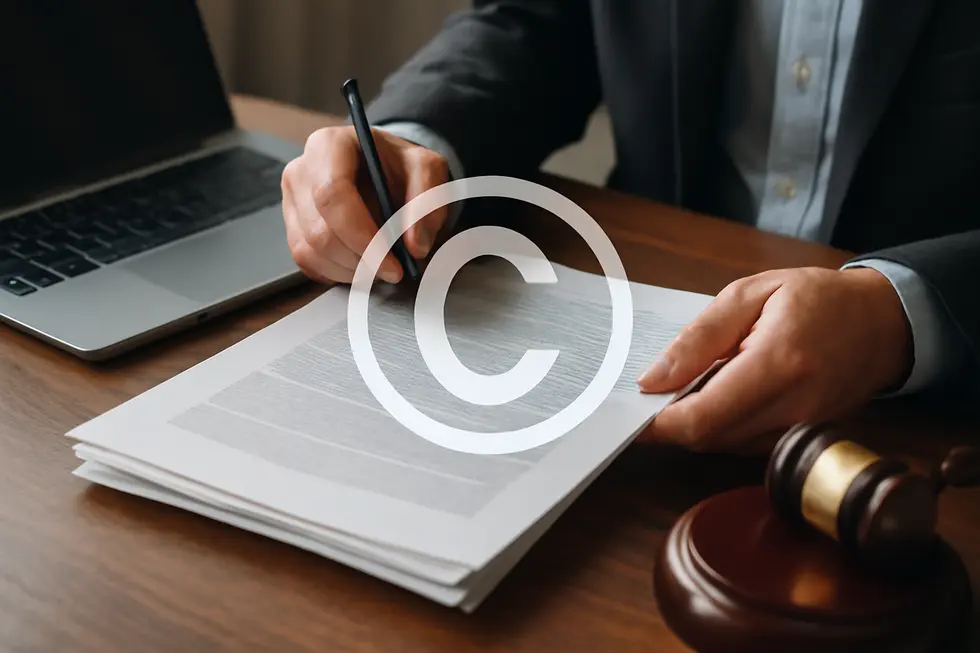
1. Defining Originality and Copyrightability: The Legal Bedrock of Protecting Creative Works
At the core of copyright legislation lies the fundamental question: when does a work qualify for legal protection? This inquiry leads us to the concept of copyrightability, which determines whether a creative work merits exclusive rights under the law. Central to this evaluation is the principle of originality, a standard that courts across jurisdictions apply to distinguish protectable expression from unprotected ideas or facts.
To qualify as copyrightable, a work must be independently created by its author, ensuring it is not a mere copy of another’s creation. This independent creation prerequisite allows multiple authors to hold copyrights on identical works developed separately, reinforcing the law’s focus on originality rather than mere novelty. Moreover, the work must embody at least a minimal degree of creativity—an intentionally low threshold clarified by the U.S. Supreme Court in Feist Publications, Inc. v. Rural Telephone Service Co. (1991). Here, the Court emphasized that originality requires more than rote effort or mere compilation of facts; there must be a creative spark, no matter how modest. For instance, a simple alphabetical phone directory listing fails this test because it lacks any creative expression despite the labor invested.
Originality protects the author’s unique expression but not underlying ideas, facts, or procedures themselves. This distinction safeguards the free flow of information while ensuring that creative contributions receive legal recognition. Beyond originality, fixation is another criterion in many jurisdictions, requiring that the work be captured in a tangible form sufficient to be perceived or reproduced.
The law also acknowledges the author’s investment of skill, labor, and judgment in the creative process. In fields like photography and cinematography, choices such as composition, lighting, or sequencing qualify as creative decisions that enhance originality. Statutory provisions like Title 17 of the U.S. Code codify these requirements, while case law continues to refine their application, sometimes extending protections to related doctrines such as timely protection of relevant commercial information.
Together, these standards balance the need to reward genuine creativity against preventing monopolization of ideas, maintaining a vibrant public domain. Understanding the nuanced criteria of originality and copyrightability is essential to navigating copyright legislation comprehensively.
For further detailed guidance on copyright standards and the originality doctrine, the University of Michigan Copyright Guide provides valuable insights.
2. Navigating Legal Standards and the Fair Use Doctrine in Copyright Protection
The framework of copyright legislation is anchored not only in granting protections to creators but also in defining clear legal standards that limit those protections to serve public interest. Among these standards, the fair use doctrine plays a pivotal role, allowing limited use of copyrighted materials without the explicit permission of rights holders. Originating from common law and codified in 17 U.S.C. § 107, fair use balances the exclusive rights of authors with the social importance of free expression, education, critique, and innovation.
Fair use assessments are inherently flexible, relying on a balanced analysis of four key factors. The first factor scrutinizes the purpose and character of the use—transformative uses that add new meanings or messages, such as criticism, teaching, or parody, generally favor fair use. Conversely, purely commercial uses tend to weigh against it. The second factor examines the nature of the copyrighted work itself; factual or nonfictional works enjoy a greater likelihood of fair use, whereas highly creative works, like novels or films, afford stronger protection to the copyright holder.
Next, courts consider the amount and substantiality of the work used. Using small or less significant portions leans toward fair use; however, taking the “heart” or essential parts of a work typically undermines this defense. Finally, the potential market impact is a critical consideration—if the unlicensed use harms the market or future licensing opportunities for the original work, it reduces the chance of fair use being found.
Judicial decisions weigh these factors collectively and contextually, ensuring the doctrine adapts to diverse scenarios while promoting creativity and cultural development. Importantly, copyrightability itself confines protection to original, independently created works and excludes facts, ideas, government works, and material in the public domain. This circumscription ensures copyright law incentivizes genuine creative expression without monopolizing foundational elements necessary for progress.
Understanding these standards is essential for navigating copyright’s complex landscape, as fair use provides a critical legal tool that supports education, critique, and innovation, without unduly impeding creators’ rights. For an expanded discussion on copyright fundamentals and the boundaries of protection, the Copyright Alliance offers authoritative insights.
For further exploration of copyright rights and exceptions, see also the copyright law public domain overview.
Chapter 2: Navigating Complex Litigation and Fair Use in AI-Driven Copyright Challenges
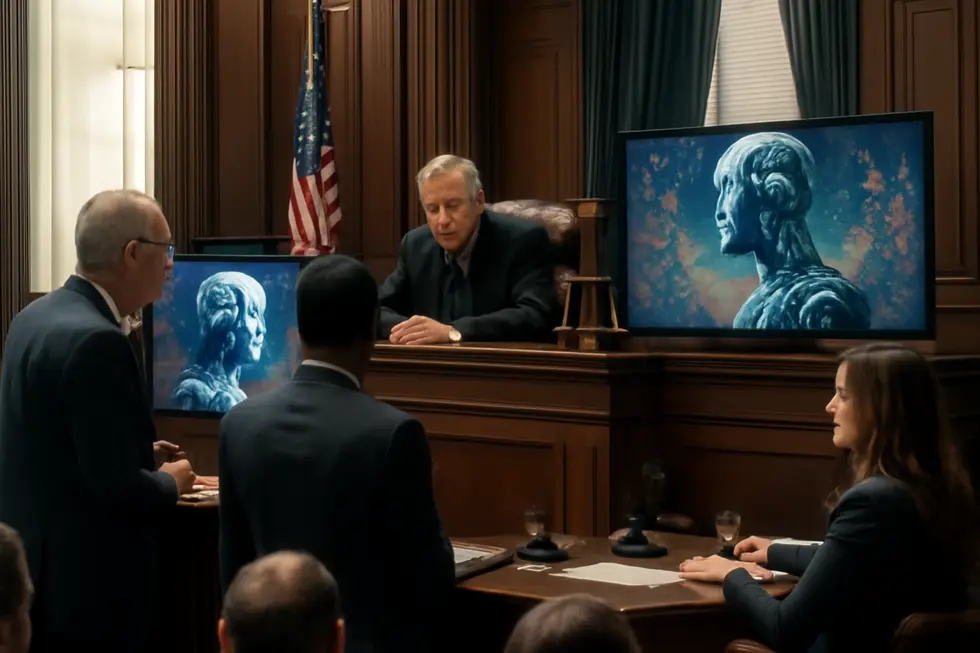
1. Technological and Legal Complexities Shaping AI’s Role in Copyright Litigation and Fair Use Debates
Artificial intelligence has transformed copyright law by introducing intricate technological and legal challenges that intensify disputes over infringement and fair use. AI systems generate large volumes of content by learning from vast datasets that often include copyrighted works, raising the question of when such usage crosses the threshold from permissible fair use into infringement. Technologically, AI’s ability to “memorize” and replicate protected materials without explicit copying blurs traditional lines of originality and unauthorized reproduction—an issue sometimes referred to as the “Snoopy Problem.” This phenomenon makes enforcement more complicated because outputs can closely resemble copyrighted works while not constituting direct copying, challenging existing legal frameworks.
Legally, courts face difficult decisions in assessing whether training AI on copyrighted inputs constitutes a transformative use, an essential factor in fair use analysis. Recent rulings illustrate this tension: in some cases, large-scale copying for AI training was deemed non-fair use due to market harm and competitive disadvantage, while in others, courts have acknowledged that training on lawfully obtained works can be fair use when sufficiently transformative. These contrasting outcomes highlight the fact-specific nature of litigation and the absence of universally accepted standards.
Ongoing lawsuits against AI developers increasingly test these boundaries, focusing on the scale of data copied, the purpose of use, and the impact on original markets. Such litigation pushes policymakers and courts to reconsider whether existing copyright laws adequately address AI-generated creations and training processes. In response, some legislative proposals aim to enhance transparency by requiring disclosure of copyrighted datasets used in AI training, empowering copyright owners to investigate potential unauthorized use.
Fair use considerations in this domain continue to revolve around core factors: purpose and character of use, nature of the original work, extent of material copied, and market effect. The evolving legal landscape reflects an ongoing effort to balance protecting creators’ rights with fostering innovation—recognizing the transformative potential of AI while mitigating risks of unchecked copyright erosion.
For deeper insights into copyright challenges related to AI and enforcement strategies, refer to the detailed analysis by Gowling WLG on AI’s impact on intellectual property enforcement. Additionally, understanding the foundational requirements of copyright and its economic implications can be further explored through copyright economics and business considerations.
2. Balancing Innovation and Rights: Policy, Economic, and Societal Forces Shaping AI’s Role in Copyright Law
The integration of artificial intelligence into creative industries presents multifaceted challenges for copyright legislation, particularly in litigation and fair use assessments. Policymakers are striving to balance protection for creators with fostering technological innovation. A key policy response in the United States is the bipartisan TRAIN Act, which requires AI developers to disclose copyrighted content used in training datasets through administrative subpoenas. This approach focuses on transparency without drastically altering the existing substantive copyright framework, aiming to reduce information asymmetry between copyright holders and AI companies. On the international stage, jurisdictions like the EU, Japan, and China show a trend toward harmonizing copyright exceptions that facilitate AI research and development, reflecting a growing consensus on adapting legal norms to new technologies.
Economically, the evolving interpretation of fair use in AI applications affects industry dynamics and global competitiveness. Stricter copyright enforcement risks driving AI innovation to countries with more permissive rules, potentially hampering the United States’ leadership in this sector. Overly burdensome regulations may also raise barriers for startups and deter investment in AI research. This tension highlights the delicate interplay between safeguarding creators’ market interests and maintaining a fertile environment for technological advancement.
Societal issues further complicate the legal landscape. Concerns arise over unauthorized usage of copyrighted material in AI training datasets and the generation of derivative works by AI that may infringe copyrights. The so-called “Snoopy Problem,” wherein AI reproduces distinct protected characters or content, epitomizes these challenges, sparking debates on whether such use constitutes infringement or fair use. Society must weigh the protection of individual creators against broader benefits from technological progress accessible to the public.
Litigation on AI-related copyright matters evidences these tensions. Courts remain divided on fair use boundaries concerning AI training data and the extent to which AI-produced works may cause indirect market harm, known as the “market dilution” theory. Some rulings acknowledge this theory as a valid copyright concern, while others reject it, underscoring the unsettled nature of legal standards. This judicial divergence fuels uncertainty for all stakeholders and underscores the need for clearer, consistent guidance.
In this evolving environment, copyright law faces the formidable task of adapting to AI’s disruptive potential while preserving fundamental principles of ownership and creativity. The delicate balance among policy innovation, economic vitality, societal values, and judicial interpretation will shape the future contours of copyright protection amid an AI-driven transformation.
For a comprehensive view on recent AI-specific copyright debates, including legislative updates and litigation trends, resources such as the Copyright Alliance offer valuable insights.
Chapter 3: Transparency and Regulation in Copyright Legislation Law: The TRAIN Act and AI Data Disclosure
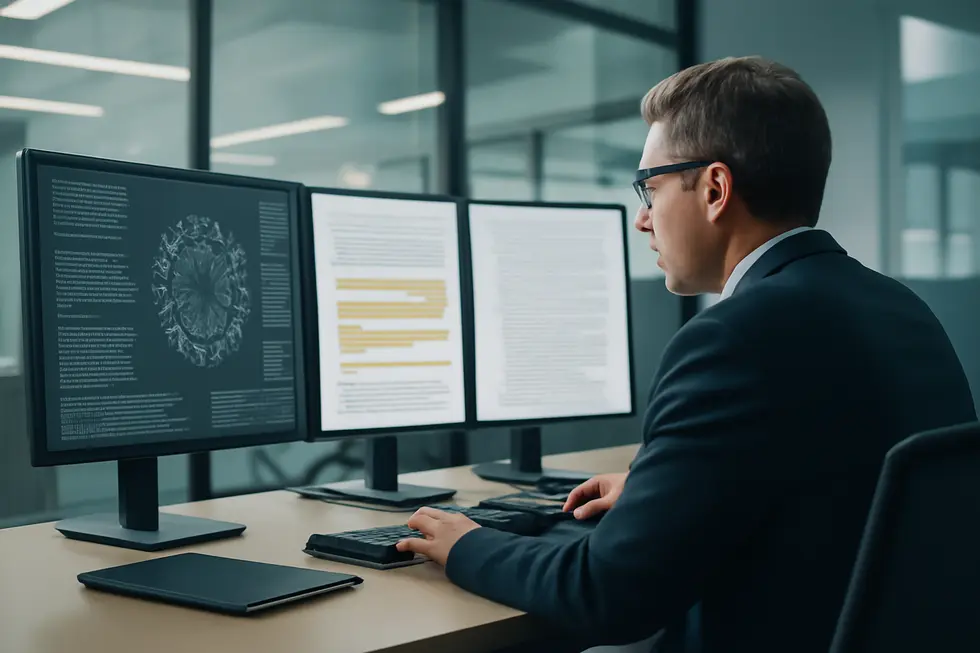
1. Enhancing Accountability in AI Training: Legal Frameworks and Transparency Mandates Under the TRAIN Act
The TRAIN Act (Transparency and Responsibility for Artificial Intelligence Networks Act) represents a landmark legal intervention in U.S. copyright legislation aimed at demystifying the opaque use of copyrighted materials in AI training. By introducing an administrative subpoena process, the Act empowers copyright owners to identify if and how their protected works have been incorporated into AI training datasets without permission. This requirement significantly mitigates the information asymmetry that has long existed between content creators and AI developers, fostering accountability within AI ecosystems. Unlike prior legal frameworks that often relied on broad exceptions or voluntary disclosures, the TRAIN Act mandates procedural transparency that supports enforcement actions through federal district courts.
Beyond the U.S. context, the European Union’s approach further exemplifies evolving regulatory attention to transparency. The EU’s General-Purpose AI (GPAI) Code of Practice establishes voluntary obligations for AI providers to openly disclose critical information such as model characteristics, data sources, licensing arrangements, and intended applications. While not legally binding, this framework aims to cultivate regulatory trust and shape future enforceable standards. Concurrently, European Parliament studies highlight tensions underlying existing copyright exceptions—especially Text and Data Mining (TDM)—which permit opt-out rights for rights holders. These exceptions struggle to address the complex realities of generative AI, where training extends beyond mere data analysis to replicating creative expressions. Such findings underscore an urgent need for legislative reform to transition toward clearer, possibly opt-in, regimes that better safeguard creators’ interests while allowing AI innovation.
Globally, legal and ethical standards are converging to address these challenges. Calls for comprehensive statutes clarifying lawful usages of copyrighted data in AI training are growing alongside efforts to define the intellectual property status of AI-generated content. Industry-led best practices are also taking shape, emphasizing transparent licensing, responsible data stewardship, and ethical AI development principles. Together, these frameworks aim to balance technological progress with the protection of creators’ rights, ensuring trust and accountability in AI deployment.
Collectively, these legal mechanisms and transparency provisions form a dynamic regulatory landscape. They provide copyright holders with essential tools to monitor and control the utilization of their works in AI while guiding developers toward compliance and responsible innovation. For those seeking further legal insights and legislative details surrounding the TRAIN Act, the official legislation documents and nuanced analyses offer valuable resources. Additionally, exploring copyright information for books can provide a broader appreciation of copyright nuances across creative domains.
For comprehensive legislative texts and continual updates, refer to the official TRAIN Act documentation and expert commentaries as detailed in TRAIN Act legislative texts and legal commentary.
2. Navigating Transparency and Enforcement: A Comparative View of the TRAIN Act and the EU AI Act
The emergence of artificial intelligence has spotlighted the crucial need for transparency and regulation in the use of copyrighted works for AI training. Two landmark legislative efforts—the United States’ TRAIN Act and the European Union’s AI Act—exemplify divergent approaches to this challenge, reflecting differing legal traditions and policy priorities.
The TRAIN Act, introduced in 2025, provides a focused legal mechanism through administrative subpoenas, enabling copyright owners to compel AI developers to disclose materials involving copyrighted works used in their training datasets. This approach concentrates on addressing information asymmetries by streamlining access to relevant data via the U.S. federal court system. By doing so, it enhances copyright holders’ ability to identify unauthorized use without resorting to protracted litigation over the substantive merits of copyright infringement. However, this targeted disclosure process carries the potential risk of increased legal conflicts as rights holders and AI developers navigate compliance and enforcement.
In contrast, the EU AI Act adopts a more expansive regulatory framework that intertwines transparency with market-wide enforcement and author remuneration. It mandates that generative AI developers disclose comprehensive information about copyrighted training data and comply with EU copyright directives, including respecting opt-outs. Crucially, the Act enforces a market ban on AI systems in violation of these rules, which elevates the regulatory burden and operational costs for AI companies but aims to protect authors’ rights more robustly. This comprehensive oversight attempts to strike a balance between fostering innovation and ensuring fair compensation for creators, though it may slow deployment of AI technologies within the EU market.
While both frameworks address transparency and accountability, they differ significantly in scope and enforcement philosophy. The TRAIN Act leverages judicial tools to empower copyright stakeholders primarily within U.S. jurisdiction, emphasizing disclosure as a gateway to further legal remedies. The EU AI Act implements a preventative and holistic regime, with transparency embedded in licensing and market access conditions, affecting the entire ecosystem of AI development and deployment.
These approaches also reflect shared challenges: How to protect intellectual property without stifling technological progress? How to manage regulatory complexity when AI training datasets traverse global borders? The debate continues as each jurisdiction refines its responses to AI’s rapidly evolving capabilities and the intertwined demands of copyright legislation.
For a deeper understanding of copyright rights and obligations in the digital economy, including implications for business owners, refer to this detailed copyright language for business owners.
Further legal analyses on these regulatory frameworks can be explored through resources such as the Copyright Alliance and PPC Land, providing ongoing updates on AI-related copyright legislation and enforcement trends.
Chapter 4: Navigating Legal Complexities of Digital Replicas in Copyright Legislation Law
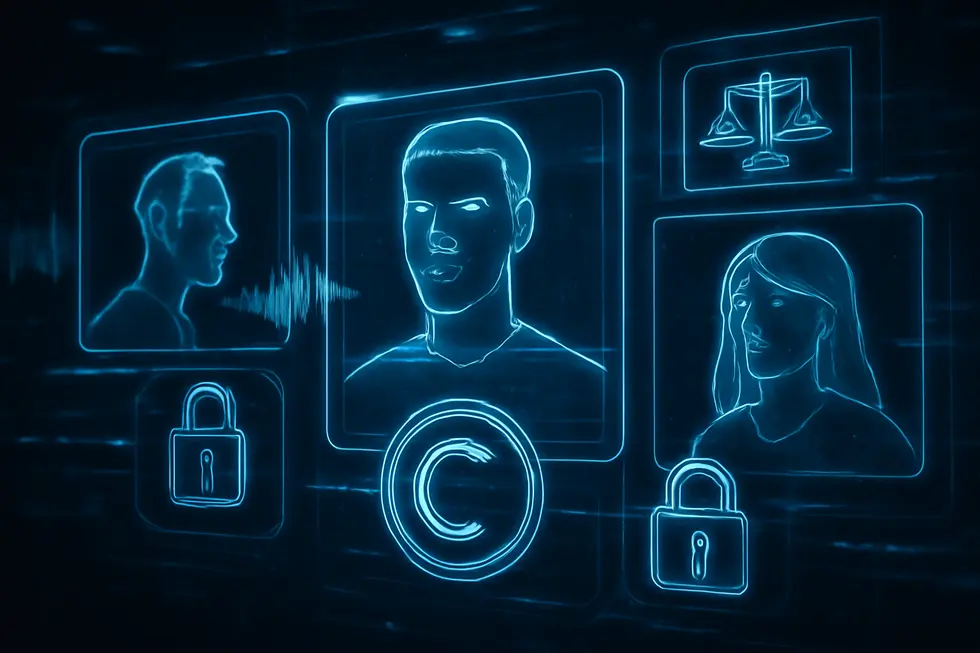
1. Balancing Enforcement and Rights Protection: The NO FAKES Act’s Legal Framework and Challenges
The rise of digital replicas—AI-generated recreations of an individual’s voice and likeness—has prompted significant legal scrutiny and legislative responses. Central to these efforts is the 2024 NO FAKES Act, a proposed federal law designed to grant individuals property rights over digital replicas and set clear boundaries for their use. Unlike traditional copyright protections that focus on creative works, this Act directly addresses unauthorized exploitation of personal likenesses in a digital context, extending rights to living people and their estates for up to 70 years after death.
The NO FAKES Act establishes a comprehensive enforcement regime. It imposes liability on those who knowingly make unauthorized digital replicas public and requires online platforms to act swiftly to remove such content once notified. This takedown mechanism draws inspiration from the Digital Millennium Copyright Act’s procedures, introducing a private right of action to empower individuals federally. Crucially, the Act incorporates exceptions preserving fair use, safeguarding legitimate expressions such as parody, commentary, news reporting, and criticism to avoid overreach into free speech.
However, the Act’s implementation faces serious enforcement challenges. Its broadly written provisions risk vagueness, potentially chilling lawful speech by inducing over-censorship of content creators and journalists. Ambiguities around what constitutes an unauthorized digital replica create uncertainty, raising concerns about limiting creativity, particularly in industries like gaming where character customization might unintentionally infringe likeness rights.
Moreover, the technological complexity of identifying and verifying digital replicas complicates enforcement. The line between transformative AI-generated content and infringing replicas can be difficult to define, demanding careful judicial interpretation. The Act aims to unify fragmented intellectual property protections—including trademark, copyright, and unfair competition laws—while acknowledging that collaborative efforts with online platforms and stakeholders are indispensable.
Striking the right balance between protecting personal rights and preserving innovation and free expression appears vital. The NO FAKES Act represents a pioneering attempt to confront digital-era challenges posed by AI and deepfakes without stifling legitimate creativity and discourse. Its ultimate success depends on legislative refinement and thoughtful enforcement methodologies sensitive to constitutional protections.
For a deeper legal examination of these issues, the Columbia Law Review provides a thorough analysis of the NO FAKES Act and federal regulations on AI replicas.
Additionally, insights into the role of existing intellectual property laws in combating digital counterfeit issues can be found in discussions on trademark protection and copyright distribution.
2. Balancing Innovation, Expression, and Property: The Multifaceted Impacts of the NO FAKES Act on Digital Replica Rights
The NO FAKES Act embodies a pivotal evolution in U.S. copyright and publicity law by establishing a federally recognized property right over an individual’s digital replica. This unique right extends to AI-generated or modified recreations of a person’s voice and likeness, addressing escalating concerns about deepfakes and synthetic media. By mandating that both creators of unauthorized replicas and the platforms hosting such content bear liability, the Act compels swift removal of infringing material, aiming to safeguard personal identity in the digital realm.
Yet, this protective stance carries significant societal trade-offs. The Act’s ambiguous language risks overreach, potentially curbing legitimate free expression, such as journalism, parody, and creative uses of AI-generated content. Platforms, fearing costly penalties, might adopt overly cautious moderation policies that suppress lawful speech—effectively enabling a “heckler’s veto.” Such dynamics raise alarms about chilling effects on innovation and the diversity of digital culture.
From a technological viewpoint, the NO FAKES Act imposes substantial burdens on internet gatekeepers, requiring intensive content monitoring and expedited takedown procedures. This regulatory pressure could curtail the development of customizable digital features, especially in entertainment and gaming industries, where character and voice personalization increasingly rely on synthetic media. Smaller developers and platforms may face disproportionate challenges, both financially and operationally, complicating the landscape for emerging technology firms.
Economically, the Act crystallizes a novel intellectual property right that can be licensed, sold, or inherited—extending protections up to 70 years posthumously. This shift introduces lucrative opportunities for estates and rights holders to monetize digital likenesses, mirroring recent market trends involving artist and celebrity likeness acquisitions. However, it simultaneously risks imposing costs and barriers that stifle competition and innovation, particularly impacting smaller market participants. The creation of such proprietary rights in digital identity embodies both economic promise and regulatory complexity.
As digital replicas reshape the boundaries of personhood and creativity, the NO FAKES Act attempts to balance these dimensions within copyright law. It highlights the ongoing tension between protecting individual rights, fostering technological advancement, and preserving open expression in the digital era. For a deeper understanding of how copyright intertwines with economic and business contexts, useful insights can be found in resources detailing copyright definition and economics for business. Up-to-date expert analyses of this legislation’s legal and societal impacts are available through organizations like the Copyright Alliance.
Chapter 5: Ongoing Evolution in Copyright Legislation Law: Balancing Creators, Users, and Innovation
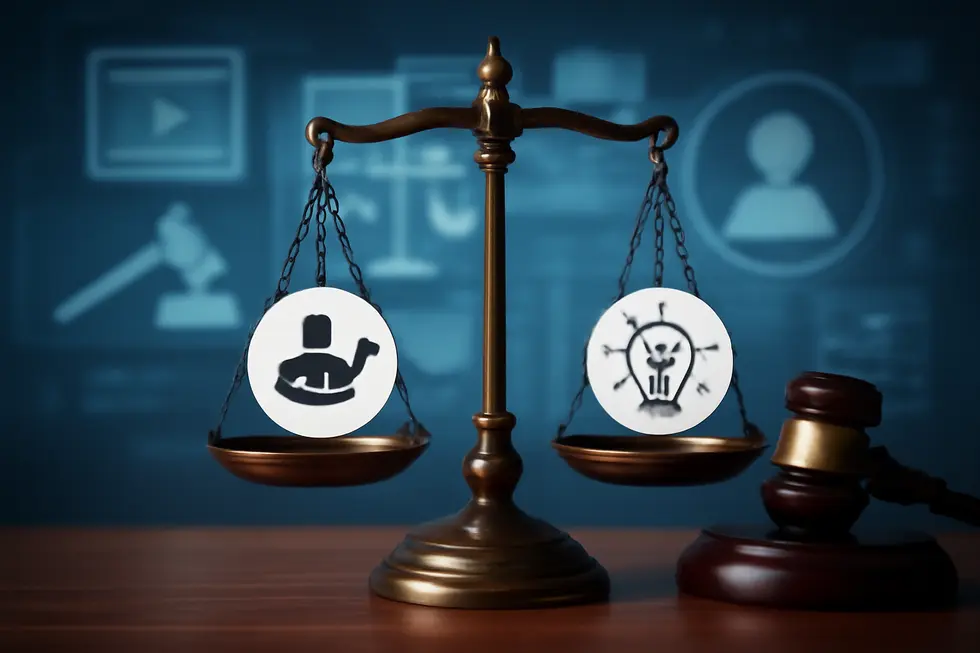
1. Navigating Copyright Challenges of AI and Digital Innovation: Legal and Technological Responses
The rapid advances in artificial intelligence and digital technologies have propelled copyright legislation into a new era of complexity and adaptation. Lawmakers and courts now face the challenge of balancing creators’ rights, user freedoms, and the pace of innovation, especially as AI-generated content and data-driven methods transform creative industries.
One critical area of evolution concerns ownership and authorship of works created by AI systems. Traditional copyright laws hinge on human authorship, which leaves the legal status of AI-generated works ambiguous. New legislative efforts aim to clarify whether the copyright belongs to developers who build the AI, the entities providing input data, or the platforms distributing the content. Establishing these frameworks is crucial for protecting original creators while accommodating the novel realities of generative AI.
Equally significant are exemptions introduced for text and data mining (TDM), which enable AI and scientific research to analyze large volumes of copyrighted materials without explicit licenses under defined conditions. These exemptions foster innovation by permitting transformative uses, circumventing the economic and practical barriers imposed by conventional licensing. However, lawmakers carefully design these exceptions to maintain the economic incentives for rights holders.
Licensing and liability frameworks are also under refinement to address new technological contexts. Legal provisions now increasingly consider complex interactions between users, AI developers, and content owners, seeking to allocate liability fairly while ensuring transparent licensing conditions. This balance supports ethical engagement with copyrighted works, protecting creators’ interests and clarifying responsibilities among digital and AI stakeholders.
Privacy and ethical concerns intertwined with digital replicas and AI-generated likenesses receive growing attention. For instance, legislative proposals like the No FAKES Act attempt to regulate unauthorized use of individuals’ digital identities, addressing intellectual property, publicity rights, and ethical sourcing of data. Despite noble intents, critics highlight limitations related to personal control and potential implications for free speech and long-term licensing consequences.
Broader efforts to future-proof copyright law include revisiting foundational statutes such as the DMCA to better accommodate AI’s dynamism and harmonizing international copyright rules to reflect emerging digital realities. Such reforms aim to create a resilient legal ecosystem where creators’ rights, user access, and technological progress coexist productively.
The United Kingdom’s Data (Use and Access) Act 2025 exemplifies these shifts, granting TDM exemptions to bolster AI development while safeguarding rights holders. Meanwhile, the ongoing deliberations around the No FAKES Act reveal the nuanced debates between protecting individual rights and fostering innovation.
This intricate landscape illustrates the intertwined evolution of technology and law, striving to recalibrate copyright frameworks in light of AI and digital innovation. For a deeper practical perspective on copyright in business, visit this copyright information example for business owners.
Additional insights on legislative challenges and AI can be found at: The Global Implications of DMCA on AI and Machine Learning Innovations.
2. Navigating Economic and Societal Shifts Amid the Evolving Landscape of Copyright Law
The evolution of copyright legislation in 2025 reveals profound economic and societal complexities as lawmakers attempt to strike a delicate balance between protecting creators, empowering users, and encouraging technological progress. The emergence of blockchain and decentralized platforms challenges traditional enforcement frameworks because content is dispersed without centralized control. This diffusion complicates takedown procedures and rights management, while simultaneously offering innovative solutions such as immutable proof of ownership and automated licensing payments via smart contracts. These advances have the potential to reduce disputes and streamline revenue collection, thereby transforming the creative economy.
Meanwhile, the rise of AI-generated content intensifies economic tensions. The U.S. Copyright Office’s adapting guidance on AI-assisted works highlights the ongoing conflict between preserving human authorship and fostering innovation through generative tools. With over a thousand AI-influenced works registered by early 2025, creators and industries face new paradigms for monetization and ownership in co-created or algorithmically generated media. These developments compel courts to refine their interpretations and sovereign policies around intellectual property rights, impacting investment incentives and the broader innovation ecosystem.
On the societal front, there is growing awareness of users as active innovators who contribute to cultural and creative development beyond mere consumption. This perspective urges legal frameworks that nurture downstream creativity while still respecting original authorship. Additionally, copyright law must reconcile the public’s interest in accessing knowledge with the imperative of protecting creators from infringement — a challenge heightened by instantaneous and global digital distribution.
The adaptability of copyright principles, as noted by the Copyright Office’s evolving stance on AI, suggests a future of flexible legal responses rather than rigid doctrines. This flexibility is essential to maintaining fairness and clarity amidst rapidly transforming technologies. As a result, the gradual integration of blockchain, AI, and decentralized platforms reshapes both economic models and societal norms relating to ownership, creativity, and collaboration.
Together, these shifts illustrate the multifaceted nature of copyright’s evolution: incentivizing creation, enabling innovation, and ensuring balanced access. This ongoing transformation will continue to redefine the interaction between creators, users, and emerging technologies in the digital age.
For a deeper exploration of the legal intricacies related to AI-created works and adaptive copyright doctrine, the U.S. Copyright Office’s updated guidance offers vital insights: https://montrealethics.ai/ai-policy-corner-u-s-copyright-guidance-on-works-created-with-ai/.
Additionally, for foundational understanding of how copyright frameworks define economic rights and protections in business contexts, the resource on copyright definition economics business can provide valuable context.
Final thoughts
Business owners operate in an environment where copyright legislation law is both a shield and a framework for leveraging creativity and innovation. From the fundamental legal standards defining copyrightability to the disruptive influence of artificial intelligence, understanding these dynamics is essential for asset protection and growth. Transparency laws like the TRAIN Act underscore emerging accountability measures critical for businesses engaging with AI, while the NO FAKES Act calls attention to the expanding domain of digital rights and identity in the digital age. This evolving legal landscape requires a proactive approach to navigate complex regulations and disputes effectively. By staying informed and responsive to these shifts, business owners can safeguard their intellectual property, avoid legal pitfalls, and harness technological advancements responsibly, ensuring their creative assets remain valuable and secure.
Your IP is the foundation of your success – let’s protect it together before it’s too late. We can’t wait to help you turn your ideas into legally secured assets.
About us
undefined
